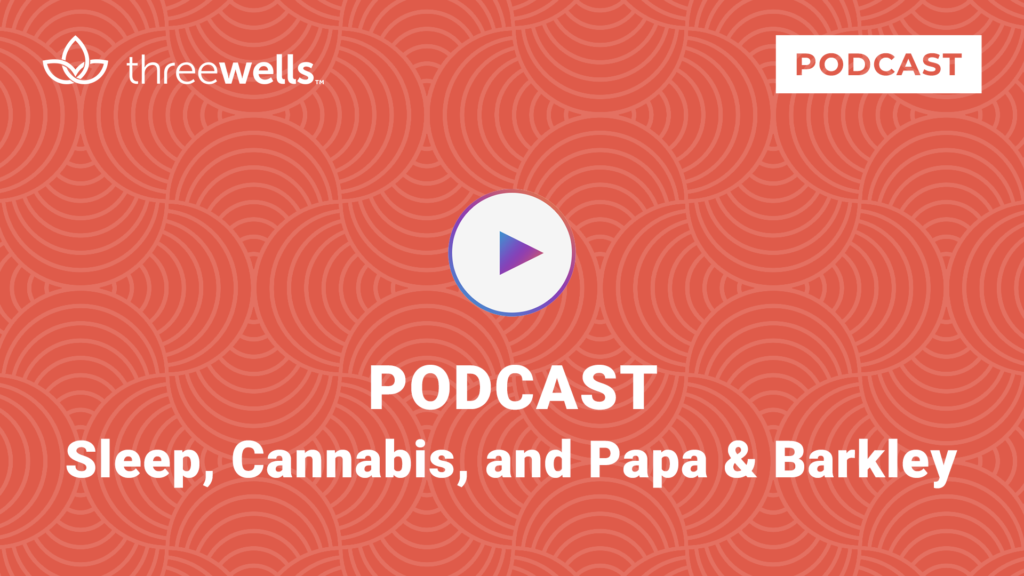Understanding How Cannabis Works
Even though humans have been using cannabis (aka marijuana) for thousands of years, much of the science about the plant isn’t very well understood. This lack of knowledge is almost entirely due to the fact that cannabis was criminalized in the 1930s and has been viewed in a negative light ever since.
So let’s dig in and understand a bit more about the compelling science behind the weedy plant known as Cannabis sativa L. Out of the nearly 500 chemical compounds in the plant, the two classes of chemicals that stand out are the cannabinoids and the terpenoids. These chemical compounds are the real the medicinal action of the plant. But it’s not that simple. There are over 60 variations of cannabinoids and over 120 types of terpenoids, all of which have different effects and work differently when combined. Here we’ll focus on the main components of this incredible plant that offer both medical and recreational benefits.
What Are Cannabinoids? – The ABCs of THC and CBD and More.
Out of the many different types of components in the plant, the big two are THC (tetrahydrocannabinol) and CBD (cannabidiol). These are both cannabinoids that are present in marijuana, but they only become active when the plant is heated, which is why cannabis is traditionally smoked (though there are a variety of delivery options/ways to consume). In the raw plant, these are in the form of cannabinoid acids, which are not psychoactive and offer different medicinal benefits (more on them later). Higher concentrations of cannabinoids are found in the flower tops and heads (buds, or bracts) of the plant. Each type of cannabinoid affects the body differently and offers a unique set of benefits.
Before exploring this in depth, it’s important to understand the human body’s relationship to cannabinoids. We humans actually produce our own “endogenous” cannabinoids, called endocannabinoids, which were only first discovered in the early 1990s. In fact, cannabinoid receptors are found in all animals. When we use marijuana, receptors in our bodies bind to the THC as they would to the cannabinoids from our own body. The binding of CBD is somewhat different and is still being explored. What we have learned over the past 20 years is this endocannabinoid system impacts a range of important functions in our bodies including:
- Protection of the nervous system
- Regulation of automated functions like breathing and heart rate
- Control of inflammation
- Modulation of the immune system
The endocannabinoid system has been called “one of the most important physiologic systems involved in establishing and maintaining human health.”[1]This is truly remarkable. Over thousands of years of human evolution, our bodies have developed a health regulating system that only responds to the active ingredients in cannabis. And new theories are emerging that some diseases may actually be caused by a deficiency in the endocannabinoid system. This would suggest that cannabis might be something our bodies require to maintain good health.
THC
Tetrahydrocannabinol (THC), is probably the most well-known cannabinoid and the first one to be discovered back in 1964. You might just say it’s the bad boy of cannabis – the one that causes the psychoactive (“high”) effects and can alter our perception. So it should come as no surprise that THC-rich cannabis has more side effects and risk factors. For this reason, it’s the most controversial cannabinoid of the bunch. Here is a list of effects and benefits of THC:
- Psychoactive
- Euphoric
- Relieves pain (analgesic)
- Anti-bacterial
- Prevents vomiting (antiemetic)
- Prevents tumors (antitumoral – in high dosage)
- Expand lung capacity (bronchodilator)
- Stimulates appetite
- Protects nerve cells (neuroprotective)
- Sleep-inducing
- Anticonvulsant (can prevent or reduce epileptic seizures)
- Muscle relaxant
- Regulates immune system (immunomodulating)
CBD
Cannabidiol (CBD) is the boring brother-in-law to THC. While THC is out partying all night, CBD is home in bed by nine, reading a good book. This distinction is due to the fact that CBDs are not psychoactive. But CBDs do pack a punch when it comes to medicinal benefits. And CBD actually has the effect of reducing the psychoactive effects of THC. This is why the ratio of THC to CBD is an important factor in the use of medical marijuana.[2] There are now strains bred to combine the two, allowing the beneficial effects of THC without the “high.” Combinations with 10% to 30% THC mixed with CBD are usually not psychoactive (though everyone responds a little differently). Here is a list of important effects and benefits of CBD:
- Non-psychoactive
- Anti-inflammatory
- Anti-anxiety
- Anti-bacterial
- Anticonvulsant (can prevent or reduce epileptic fits)
- Prevents metastasis of tumors (antimetastatic in high dosage)
- Increases blood flow (anti-ischemic)
- Protects nerve cells (neuroprotective)
- Muscle relaxant
- Antipsychotic
- Regulates immune system (immunomodulating)
CBN
Cannabinol (CBN) is produced as THC ages and breaks down. This process is known as oxidation. High levels of CBN tend to make the user feel confused rather than a euphoric high. It seems to cause the more disorienting qualities of THC. Pure forms of CBN have at most 10 percent of the psychoactivity of THC. For this reason, cannabis products should be stored in a dark, cool, airtight environment, which keeps CBN levels to a minimum. But it turns out that CBN may have some benefits as well. It can be used to treat epilepsy and can lower intraocular pressure reducing the risk of glaucoma. CBN is also a strong sedative and can be used to fight insomnia.
CANNABINOID ACIDS
Cannabinoids don’t form unless the plant is heated. What exists in the raw plant is cannabigerol acid (CBGA) that is a precursor to all the other cannabinoids. CBGA can go on to form:
(1) THCA and derivatives
(2) CBDA and derivatives
(3) CBCA and derivatives
It is important to know that cannabinoid acids have important medicinal benefits as well, such as anti-spasmodic, anti-proliferative and anti-inflammatory effects.
WHAT ARE TERPENES?
What are Terpenes – Wake Up and Smell the Cannabis
Terpenes are the compounds that give the plant a distinctive smell. While often overlooked, they contribute to the medicinal benefits of a particular strain. Terpenes are quite potent and can affect mood and behavior when inhaled or absorbed in low concentrations. And, most importantly, they determine whether the cannabis strains are indica or sativa Strains 101.
| Common Terpenes | Aroma |
| β Caryophyllene | Light spice |
| α Pinene | Pine oil |
| Linalool | Floral |
| Limonene | Citrus |
| Myrcene | Resinous, musky, slightly metallic |
| Humulene | Hoppy, like in beer |
Terpenes may induce relaxation, sedation, and stimulation on top of the effects of the cannabinoids. They also offer benefits for conditions such as epilepsy, anxiety, depression, and inflammation. So while the individual terpenes contribute to the effect of cannabinoids, there is also evidence to suggest an “entourage effect” of these compounds working together. In other words, the interaction between the cannabinoids and terpenoids “could produce synergy with respect to treatment of pain, inflammation, depression, anxiety, addiction, epilepsy, cancer, fungal, and bacterial infections.”[3]
Some medicinal cannabis products isolate oils rich in THC or CBD and add back full plant extract or specific types of terpenes. But it isn’t clear if this allows for the full and proper effect of using the actual plant. While the evidence is still not in, there’s a belief among some that the “plants are better drugs than the natural products isolated from them.”[4] As with most of the science around cannabis, there is still a lot more to learn.



